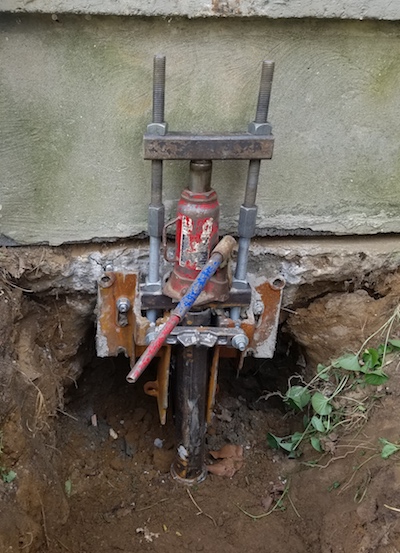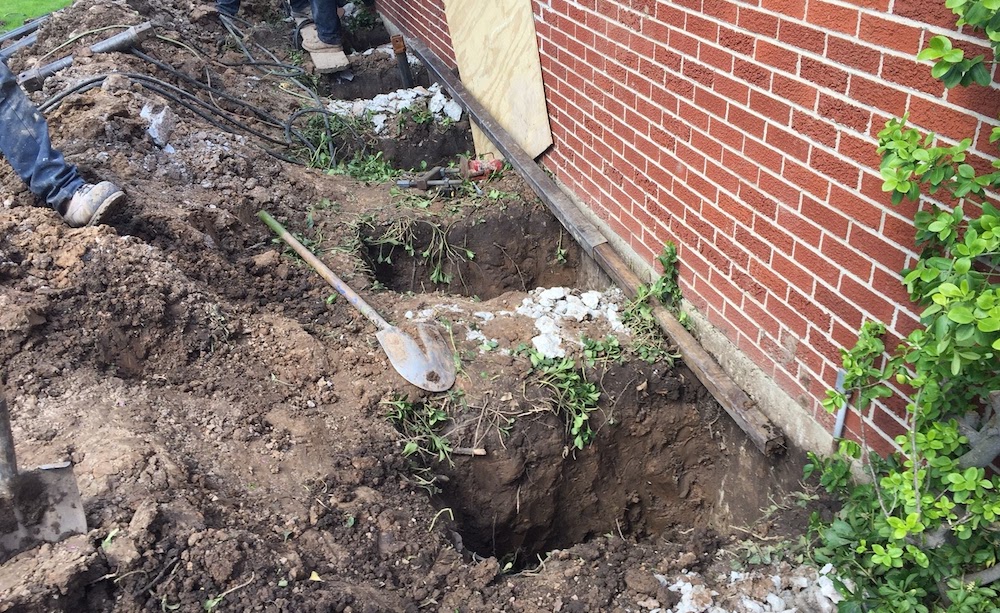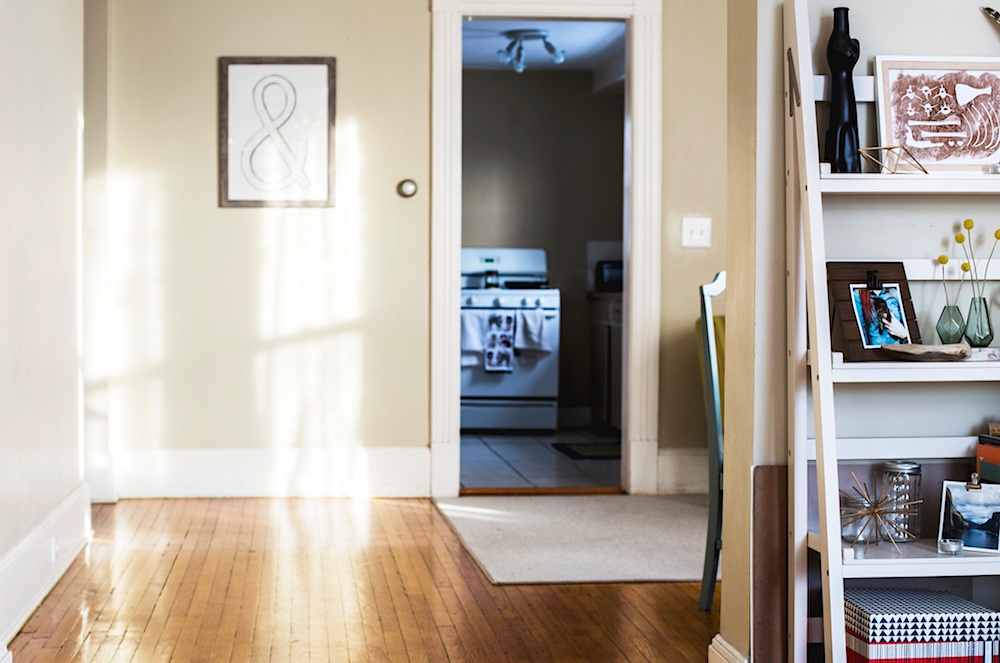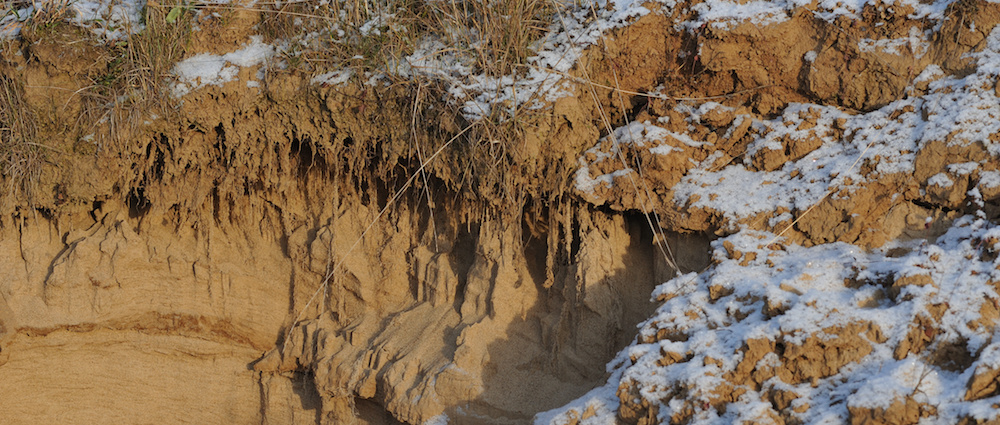It’s the weekend- a time for rest, to-do lists, and home projects. As the family bustles around the kitchen, your son has trouble opening the pantry door. You help him out and think nothing of it. But then you have difficulty opening the backdoor. Funny, the door didn’t stick this much a few weeks ago. Maybe this is normal and the house is just settling. Weeks later, those doors become even harder to open.
Sticking doors are a typical red flag to spot when it comes to home foundations. This flag could mean your foundation needs attention. As the homeowner, it can be hard to know how to address this problem. The answer is to complete a foundation assessment yourself, and then call in the experts if you notice other signs of disrepair. This type of home repair is typically beyond the scope of a DIY project mainly due to the required machinery for the task.
Still, you should learn about what foundation experts are doing, and the materials they use.
Fortunately, many foundation repair companies explain their process, tools, and materials online. As you research more companies, you come across the similar terms repeatedly. What are piers? Are helical piers the same as push piers? Is one better than the other? It appears some foundation companies prefer one over the other, but it’s hard to understand why. Here’s an explanation of why foundation companies use piers, how push piers differ from helical piers, and why Kent Foundation Repair prefers helical piers for most jobs.
Why Piers are Necessary for Foundation Repair
To understand the necessity of piers, you must first learn about what causes foundation issues and why piers address those underlying issues.
Foundations are designed to maintain the stability of a home and keep it leveled. Natural forces like varying soil composition and erosion constantly work against this effort. Different soils react differently to moisture and dry spells. The sand or silt in your soil drains well, but could cause the soil to contract during dry months. Soil with a lot of clay does not drain well and could expand with heavy rains. In Michigan, we have a multitude of soil combinations that can compromise your foundation’s integrity. All these conditions and soil types lead to movement and shifting- exactly what you don’t want your foundation to do.
READ MORE: Causes of Foundation Problems
Foundation companies use piers to support a foundation, and keep it from shifting with the changing soil and moisture. These piers, or steel rods, are designed to create resistance and counteract the shifting so your foundation remains strong and stable. While the goal is the same for each pier type, they differ in how they achieve this goal. And that’s where knowing the lingo can help you understand how the piers will protect your foundation.
What to Know about Push Piers
Push piers are long steel rods that are pushed into the ground with hydraulic equipment. The rods are compression-fit to achieve great depths into load bearing soils. When attached to the foundation, push piers use the structure’s weight as a counterbalance to the force of the soil. The counterbalance creates the necessary force to maintain the home’s stability.
Push piers have certain limitations to be aware of. Most importantly is the weight required to create the needed counterbalance. These pier types work well when the structure is heavy, like a commercial building, or 2-story home. For lighter structures, like a porch or sunroom, push piers are not the preferred choice. Another limitation is its permanence. Once these piers are installed, they cannot be removed or moved to a new location because of its compression-fit design.
The Design and Function of Helical Piers

Helical piers can be used with many types of structures because the piers do not rely on the structure’s weight. They can be used to stabilize or lift a sinking porch, home addition, or lighter portion of the home.
They can also be installed at an angle to reinforce bowing basement walls or retaining walls. In these cases, the helical piers are called helical tiebacks. The piers are drilled diagonally through the bowing wall and attached to it after the desired depth is reached. The torque create by the helices pulls the wall back to level and significantly increases its ability to withstand extreme hydrostatic pressure.
Why Kent Foundation Repair Prefers Helical Piers
For most foundation jobs, Kent Foundation Repair prefer helical piers over push piers. The versatility mentioned above is one reason for the preference. More importantly, helical piers’ precision and load bearing capabilities are why we choose this pier type for most jobs.
Precision is vital when repairing a home foundation.
Experts want to know their exact depth, how much torque is being applied, and the right moment to stop digging. Helical piers are installed with handheld equipment that shows the amount of torque and resistance being used. Whether the pier is being installed vertically or at an angle, we always know how far to dig and what depth will resolve the problem.
Load-bearing capabilities are another reason we prefer helical piers. Because push piers require the weight of the structure to provide stability, the amount is resistance is limited. With helical piers, the handheld equipment tells us the resistance amount and it is not limited by weight. Put simply, helical piers are capable of adding greater degrees of stability and lift compared to push piers.

There are other reasons why we prefer helical piers. These include:
- Versatility: Helical piers can be installed at a variety of angles to fully support different types of structures. You can use this pier type for everything from foundations to bowing walls to porch posts.
- Because helical piers are driven into the ground instead of pushed and compression-fit, they can be removed and reused. Repurposing the piers make it a more cost-effective solution for homeowners.
- This pier type requires minimal excavation. This means installation is faster and easier, reducing the cost for you.
- Helical piers can be used with cracked or broken foundation footings unlike their push pier counterparts.
Picking the Right Piers for Your Home
Despite our preferences, we still believe push piers are a great option for some jobs. Push piers have been around for over a hundred years and have proven themselves over and over. We continue to opt for push piers when we feel they’re the right choice for the job.
You now know more about your piering options. Ask the professionals for help to stop that sticking door and avoid further foundation issues. We will provide a free quote for your project, explain which pier is right for you, and go over the process with you. No matter the pier, you can trust that we will use the right tools to repair your home foundation.
REQUEST YOUR FREE ESTIMATE TODAY


